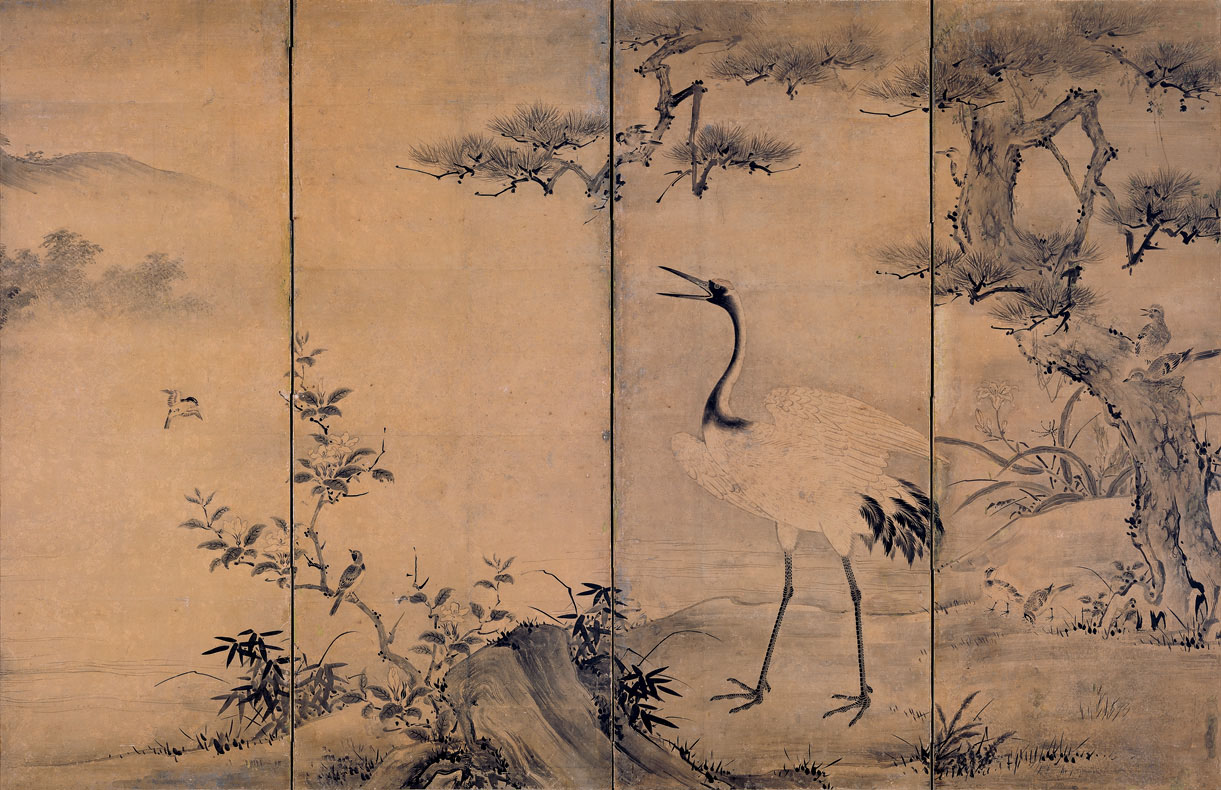From its original base in Kyoto to its later establishment in Edo, present-day Tokyo, the Kano school held a firm grip on the Japanese art world from the middle of the Muromachi Period (1392-1573) to the Meiji Era (1868-1912) — a grip aided by its close ties with powerful patrons such as the samurai lords Toyotomi Hideyoshi (1536-98) and Oda Nobunaga (1534-1582). With such invaluable allies helping legitimize the Kano school's aesthetic as the pre-eminent style of Japanese art, it would have been no easy task to challenge it — but that is exactly what one artist, Hasegawa Tohaku (1539-1610) and his school did.
"Hasegawa Tohaku and the Kano School" at the Idemitsu Museum of Arts documents some of the rivalry between the two camps and the stylistic differences that this encouraged. On show in this compact exhibition are around 25 huge byōbu (room-divider) screens by the rivals, supported by various other smaller paintings and ceramics by other artists from the period.
The Kano school was founded in Kyoto by Kano Masanobu (1434-1530) and flourished through several generations, especially under his son Motonobu, who systematized its style and instituted a studio system to pass down the techniques through the generations.
One of those Motonobu nurtured was his own son, Kano Shoei (1519-92), who, while not a great innovator like his father, consolidated the family's legacy. His "Birds and Flowers" from the 16th century, on display here, serves as a typical example of a Kano school ink-on-paper work. Though dominated by a crane, the four-panel screen takes its name from the variety of birds resting on the tree branches and the flora that dots the landscape. Also of key importance is the empty space to the left of the crane that sets off the composition.
Despite the rivalry that ensued between the Kano and Hasegawa styles, it is said that Hasegawa, who went to Kyoto as an outsider from Noto province (now Ishikawa Prefecture), originally studied with the Kano school. He also incorporated ideas he learned from earlier painters' works, including those of Sessho Toyo and Chinese masters of various schools, including Muxi.
From these artists he learned to employ restraint and minimalism, but he also knew how and when to make an impression with a bold statement. Illustrative of this is "Tigers and Bamboo," a set of two six-panel screens, the tiger in one screen dramatically ready to pounce, the other lazily scratching itself behind the ear. His use of ink for the bamboo is strong and striking in the foreground and fainter in the background, giving a sense of depth of the grove. And the stripes of the tigers — an animal it's unlikely he would have been able see a live example of in Japan — are rendered with animated lines. Although rivalry and jealousy often shut doors of opportunity to Hasegawa as Japanese painting was monopolized by the Kano school, his perseverance paid off. In time, he gained important commissions and patrons, including, late in his life, through his close relationship with Shogun Tokugawa Ieyasu.
While not as widely established as the Kano school, Hasegawa also passed on his skills, mainly to his sons. A pair of 17th-century screens attributed to the Hasegawa school on the theme of waves is exhibited next to another pair of screens on the same subject by Kano Tsunenobu from the same or early in the next century. A comparison of them shows that the two camps also influenced and inspired each other, displaying similarities as well as differences. The waves in Kano Tsunenobu's work are presented through stylized swirls and curves, while in the Hasegawa school's painting they are depicted with longer, and stronger, dark lines suggestive of a stormy sea. Kano's is more decorative and pleasing to the eye, while Hasegawa's is dramatic and aggressive, yet, where the waves break in the Hasegawa work, they form decorative swirls similar to those of the Kano screen. With the exact dates of the two works still open, the issue of who influenced who is still not settled.
"Hasegawa Tohaku and the Kano School" at the Idemitsu Museum of Art runs till Dec. 18; admission ¥1,000; open 10 a.m.- 5 p.m. (Fri. till 7 p.m.), closed Mon. For more information, visit www.idemitsu.com/museum/honkan/index.html.



















With your current subscription plan you can comment on stories. However, before writing your first comment, please create a display name in the Profile section of your subscriber account page.